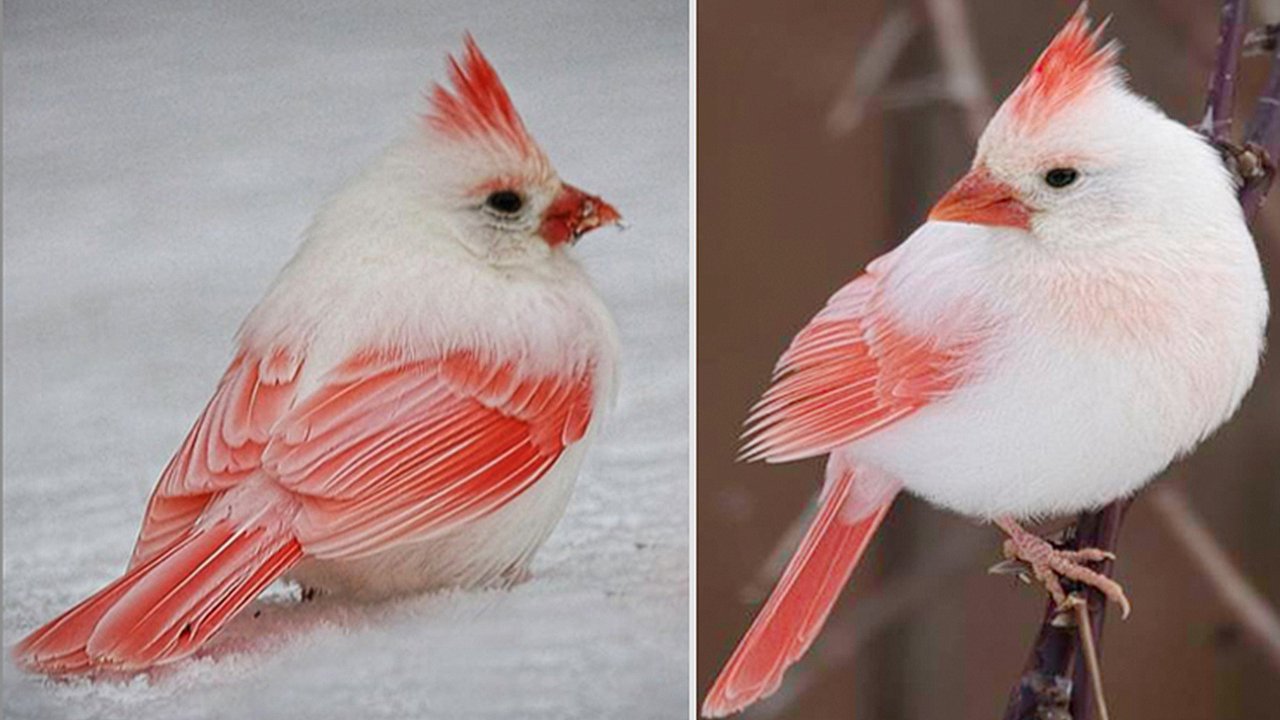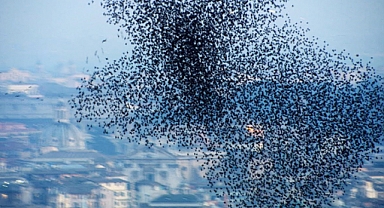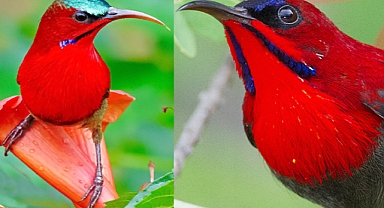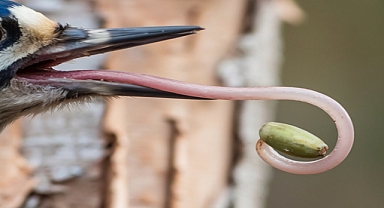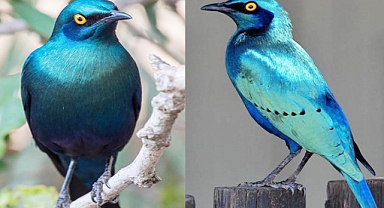"Its unusual coloration makes it stand out so much. It’s rare, and I think that’s what makes it even more stunning." Despite his extensive experience with birdwatching, he had never encountered such a unique specimen until now.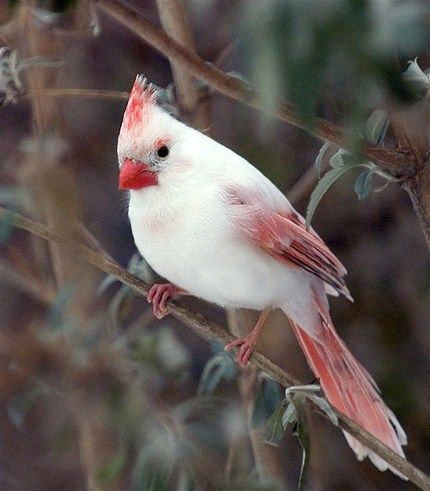 The Science Behind the White Cardinal
The Science Behind the White Cardinal
The reason behind this striking appearance lies in a rare condition known as leucism. Unlike albinism, which results in a total lack of melanin, leucism only affects pigmentation in feathers, leading to varying degrees of white coloration. "The chances of seeing one of these birds are about one in 1,800," Scott explained. "Some leucistic cardinals may have just a few white patches, while others, like the one I saw, are almost completely white."An Unexpected Guest Draws Widespread Attention
Davis frequently places birdseed in his backyard to attract local birds, and on that particular day, he had scattered sunflower seeds over the snow. "Cardinals love sunflower seeds, so I put some out, and that's when it appeared," he recalled. "It stayed in my yard for around 10 to 15 minutes each visit."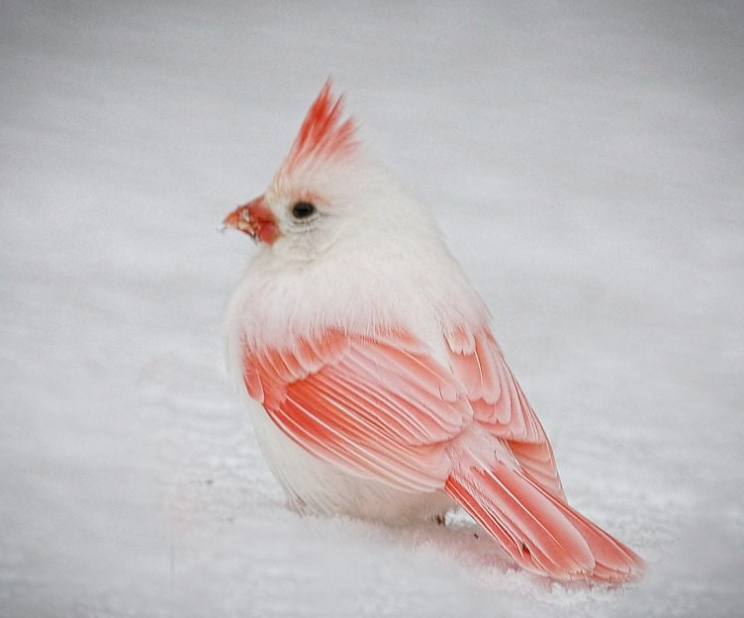
His incredible sighting quickly gained traction after being featured on a Knoxville news station, drawing the attention of bird enthusiasts from all over. Many eager birdwatchers reached out, hoping to visit his property for a chance to see the rare bird themselves. However, Davis has politely declined these requests. "I think it's amazing how many people are interested, but I’d rather not have the hassle," he admitted. Unfortunately, the cardinal hasn’t returned since that fateful day.Understanding Albino and Leucistic Cardinals
On rare occasions, Northern Cardinals can exhibit white or pale-colored feathers due to a lack of melanin. However, there are key differences between albino and leucistic cardinals: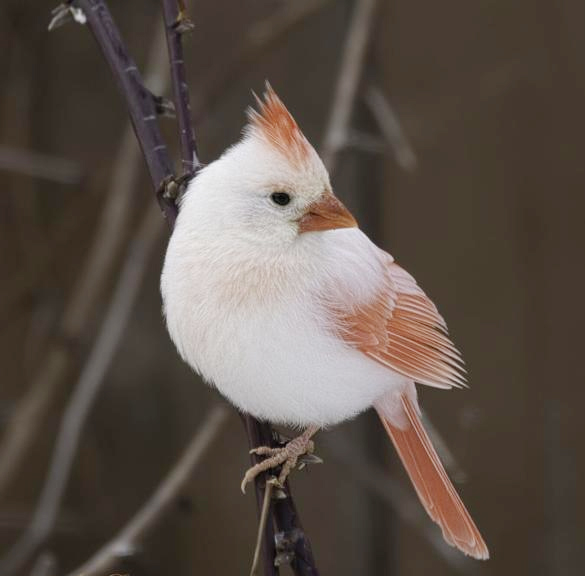 Although this rare cardinal’s whereabouts remain unknown, its brief visit left a lasting impression on Scott Davis and the birdwatching community alike. Whether it will ever return remains uncertain, but its unique beauty has already made it an unforgettable sight.
Although this rare cardinal’s whereabouts remain unknown, its brief visit left a lasting impression on Scott Davis and the birdwatching community alike. Whether it will ever return remains uncertain, but its unique beauty has already made it an unforgettable sight.
 The Science Behind the White Cardinal
The Science Behind the White CardinalThe reason behind this striking appearance lies in a rare condition known as leucism. Unlike albinism, which results in a total lack of melanin, leucism only affects pigmentation in feathers, leading to varying degrees of white coloration. "The chances of seeing one of these birds are about one in 1,800," Scott explained. "Some leucistic cardinals may have just a few white patches, while others, like the one I saw, are almost completely white."An Unexpected Guest Draws Widespread Attention
Davis frequently places birdseed in his backyard to attract local birds, and on that particular day, he had scattered sunflower seeds over the snow. "Cardinals love sunflower seeds, so I put some out, and that's when it appeared," he recalled. "It stayed in my yard for around 10 to 15 minutes each visit."

His incredible sighting quickly gained traction after being featured on a Knoxville news station, drawing the attention of bird enthusiasts from all over. Many eager birdwatchers reached out, hoping to visit his property for a chance to see the rare bird themselves. However, Davis has politely declined these requests. "I think it's amazing how many people are interested, but I’d rather not have the hassle," he admitted. Unfortunately, the cardinal hasn’t returned since that fateful day.Understanding Albino and Leucistic Cardinals
On rare occasions, Northern Cardinals can exhibit white or pale-colored feathers due to a lack of melanin. However, there are key differences between albino and leucistic cardinals:
- Albino Cardinals: True albinos completely lack melanin, meaning their skin and feathers appear entirely white. Their eyes also have no pigment, resulting in a red appearance. Because melanin plays a role in vision and protects against UV light, albino cardinals often have poor eyesight, making survival in the wild challenging.
- Leucistic Cardinals: Unlike albinos, leucistic birds can still produce melanin, but the pigment fails to be properly deposited in their feathers. This results in a patchy or fully white appearance while maintaining normal dark-colored eyes. The cardinal Davis spotted is an example of a leucistic bird.
 Although this rare cardinal’s whereabouts remain unknown, its brief visit left a lasting impression on Scott Davis and the birdwatching community alike. Whether it will ever return remains uncertain, but its unique beauty has already made it an unforgettable sight.
Although this rare cardinal’s whereabouts remain unknown, its brief visit left a lasting impression on Scott Davis and the birdwatching community alike. Whether it will ever return remains uncertain, but its unique beauty has already made it an unforgettable sight.